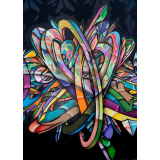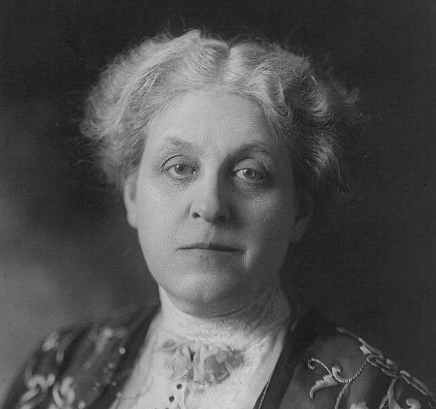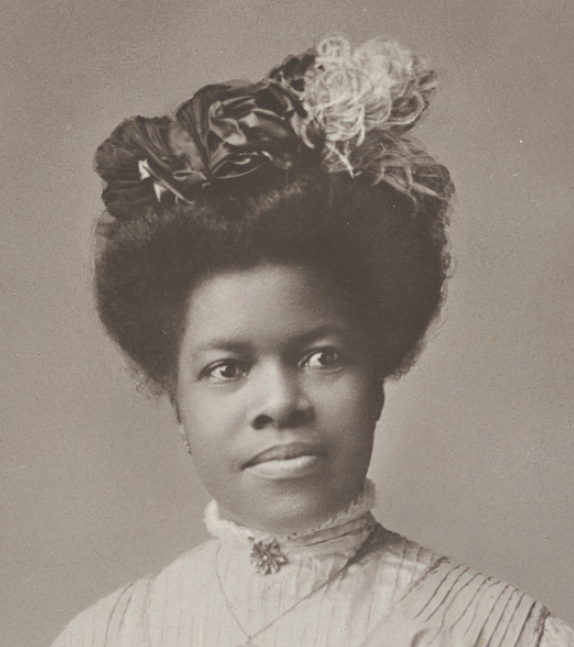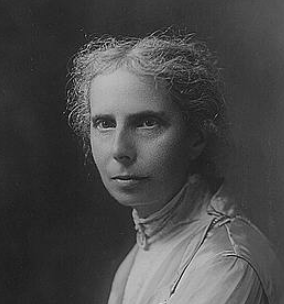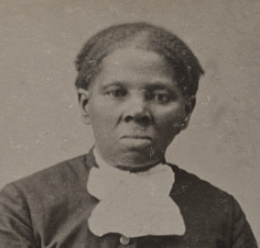
Learn how to teach any social studies class, driven by primary source analysis, the Everything is a Primary Source way.
Join one, two or all three of the different two-hour sessions beginning at 9 am ET on Tuesday, August 6th in order to
- Refine and supplement your classroom facilitation
- Encourage your students’ historical literacy skills
- Get the most out of LOC.gov and other primary source collections
- Build on your content area strengths
- Contribute to the building of educational resources,
- Help put the SOCIAL back in social studies, and have FUN at a professional development workshop!
Details and registration for this free event can be found here.
#professionaldevelopment #workshop #training #historyiseverywhere #podcast
World renowned artist, Faith Ringgold, has passed, leaving behind a powerful legacy of art. She was New York's own, and so many of the article below will come from New York Museums, and how her art had an impact. I have included the lessons from the various art institutions with an emphasis on The New York Times Learning Network, which has both a local and national perspective on Ringgold's considerable body of work.
The New York Times Learning Network has origins to MoMA's original Visual Thinking Curriculum (VTC) which has undergone a number of incarnations. I had the privilege of helping to launch the initial VTC so the questioning techniques and strategies are those I always enjoyed.
NYTimes: Faith Ringgold Dies at 93; Wove Black Life Into Quilts and Children’s Books
NYT Up Close: Faith Ringgold: 'Didn't Want People to Be Able to Look, and Look Away'
NYT – T Magazine feature article : – Why Faith Ringgold Makes Sure Her Pieces Bear Her Signature
NYT Art and Design: Faith Ringgold’s Path of Maximum Resistance
Guggenheim Museum: Artist Faith Ringgold Discusses "Tar Beach" on "Craft in America" - May 9, 2012
On the television series Craft in America, pioneering artist Faith Ringgold is interviewed at the Guggenheim about her life, her process, and her story …
The Guggenheim Museum: Ashley James on Faith Ringgold’s “Tar Beach”
Brooklyn Museum: Faith Ringgold
The Guardian: Art - Faith Ringgold: 'I'm not going to see riots and not paint them'
Faith Ringgold Chronology (from her site)
Faith Ringgold, quilt and visual artist, dies at 93 : NPR
Lesson Plans, Faith Ringgold
FREE Faith Ringgold Story Quilts, Grades 2-4 — VISIONARY ART COLLECTIVE
Faith Ringold matt museum lesson plans - Visionary Art Collective
Virtual Views: Faith Ringgold | MoMA
Five Photography Assignments That Invite You to Look Closely at the World
Pre K - 2 3 - 5 6 - 8 9 - 12 13+ Art/Music English/Language Arts Social Studies/History Faith Ringgold, Artist
The New York Times Learning Netowork MoMA Guggenheim Museum
If you'd be interested in making a game with images and other resources from LOC, we have two options (both free because the platform is in beta and we want feedback). We can easily do games in two languages, but you'd need to provide the translation if the second language isn't Spanish
- Our low code platform where you make the game yourself. It takes about 1/3 the time of making an educational game normally, can be done by a very junior developer (say, teacher or even a student with a year of programming experience) and runs on anything with a web browser. HOWEVER, it's not for a person who has zero knowledge of CSS, HTML or Javascript. If interested sign up for a demo here - https://www.7generationgames.com/how-7-gen-blocks-is-changing-educational-games/
- We have interns who are doing demo games using the platform. If you'd like to be paired up with one, you can sign up at the same link and just let me know that's what you want. We can discuss your game and what the interns can do (coding) and what you would need to provide (script and resources to include). Of course, they can only use resources that are not copyrighted. Social Studies/History Bilingual Education/ESL Technology
Hello TPS Teachers Network friends,
KidCitizen producer Snow&Co is putting together an interesting proposal (on a tight deadline) to the Lewis-Houghton Initiative, and we are looking for Advisory, Curriculum, or School-pilot partners.
The Lewis-Houghton will provide grants to organizations to develop digitally-enabled learning initiatives for secondary education based on creative arts driven instruction, especially focused on music, in history, civics and democracy.
Our proposed project, "Music Of Us", aims to create a cloud-based platform and "episodes" that will enable inquiry-based exploration of music and sound primary sources - providing ways for listeners to explore the musicians, history, social context, and styles of a piece of music while listening to it. It will build on the successful technical platform and approach used by KidCitizen, with new music-focused features. We think this will be an exciting new way to explore musical primary sources. Here's a detailed description.
I am making this request on a ridiculously short deadline - the LOC needs applications by June 30, next week! (They announced it at the start of this month, and we had to address other deadlines before getting to this.)
Snow&Co will be the lead org, and I'll be working to streamline what we'll need from you for the proposal (mainly describing what you'd do, and budgeting that.)
Detailed proposal description:
Hi everyone!
We are looking for a few 5-8th grade teachers (preferably teachers in social science / history) and their students (2-3 students per session) to play a Civics Educational game and fill out surveys. Each teacher participant will be briefed before the play session, help their students set up, observe the play, and fill out surveys when they are finished playing.
The game takes a student ~20 minutes to complete and the surveys take <5 minutes to complete. Teachers will be compensated with a $25 Amazon digital gift card. The result of the survey will contribute to new developments on the game this year. The game is designed and developed by FableVision Studios - a Boston-based educational media company.
More info about the game itself:
“Civics: An American Musical” is a free civics-learning game that combines history, primary sources with music, inspired by the musical “Hamilton”. Students assume the role of a Broadway musical producer, adapting true events from United States history to the stage. Players use analytical skills to complete various activities based on primary sources. They earn points to build components of their musical, such as the lyrics and costumes. Topics and primary sources covered by the game ranges from Racial segregation in public school to The Chinese Exclusion Act.
If you are interested, sign up here, or contact Snow at snow@fablevision.com. Sign up ends April 7th.
More information about the game can be found in the teacher's guide here.
6 - 8 3 - 5 Social Studies/History civics interactive online teaching
A newly published children’s book Change Sings: A Children’s Anthem, is a beautiful poem by Amanda Gorman (NY Times Best Selling Author), with pictures by Loren Long.(NY Times Best Selling Illustrator). The book tells the story of a young girl who leads others on a musical journey.
“They learn that they have the power to make changes - big or small - in the world, in their communities, and, most importantly, in themselves.” (Change Sings)
Essential Questions
Observe:
- Describe images you saw on the page?
- What words did you notice in the poem?
Reflect:
- What was the poem about?
- Who created it?
Question:
- “Every child has the power to change the world.” What is one change you want to make?
- What is an anthem?
- If you wrote an anthem, what would it be? Who or what would it honor?
LOC Artifacts
The Library of Congress has artifacts that support many lesson plans that are available for teachers to use in their classrooms.
From the Patriotic Melodies Digital Collection, students can view the music and lyrics for The Star Spangle Banner - National Anthem.

“Lift Ev’ry Voice and Sing”, an essay by Burton W. Peretti
Added to the National Registry: 2016
Lift Every Voice and Sing poem - students can see the poem written out
Today in History - Dr. Martin Luther King, Jr.
(corresponds to images on pp. 3-4 of Change Sings)

Lesson Ideas
There are a number of lesson ideas available for teachers to explore. Here are my top picks.
Cultural representation reflection activity that ranges from having students compare and contrast their experiences with elements of the story using drawing and guided reflection, to having student reflect on what they see in their world and the experiences they notice in the text (e.g., power, bias, privilege).
Amanda Gorman’s website - learn about the author
Amanda Gorman book introduction - “Every child has the power to change the world.”
Lift Every Voice and Sing background - A poem originally set to music
Crayola: Our Anthem Lesson ideas
What images stand out when you sing your national anthem?
Write and illustrate an original anthem.
National Education Association Lesson ideas -
“Lift Every Voice and Sing,” often referred to as "The Black National Anthem," was a hymn written as a poem by NAACP leader James Weldon Johnson.
The lyrics for the United States national anthem, “The Star-Spangled Banner," come from the "Defence of Fort M'Henry," a poem written by lawyer and amateur poet Francis Scott Key.
Have students write their own anthem for something that is important to them, honoring someone, or something they are passionate about.
Talk with students about anthems and how the book has inspired them
Talk about how poetry and music can come together to create an anthem
Educator Guide for Change Sings - has a variety of ideas for different grade levels
Additional Resources
“Lift Every Voice and Sing“ Alicia Keys performance w/ narration by Anthony Mackie (NFL)
Why we "Lift Every Voice and Sing" | The story behind the 'black national anthem'
Art/Music English/Language Arts Library Social Studies/History UArts Pre K - 2 3 - 5 6 - 8

Progress and Poverty in Industrial America is my 18-page document-based question guides students through the historian’s process with an investigation of the essential question, “How do we evaluate the social costs and benefits of technological innovations?” To make the question relevant to students, it begins with a brief examination of the impact of 21st c technologies / global economy on progress and poverty in contemporary America.
Online overview here
Available as a free iBook here
And a web-based version here
Next the book turns to historic content set in late 19th century America. “Stop and think” prompts encourage a deep reading of many notables of the “Gilded Age” – including Russell Conwell, Henry George, Andrew Carnegie and Stephen Crane. Visual source material includes posters, 1908 Sears Catalogue, a gallery of photographs by Lewis Hine and video of one of Edison’s early Vitascope films.
KidCitizen announces the release of a new episode for elementary age children to practice close observation of a primary source photograph from the Library of Congress.
A Close Look at the Miyatake Family uses the strategy of close observation to help students slow down their process of looking at a primary source and more deeply investigate the details and hints that help construct the story captured in the photograph. In this interactive episode, students uncover the story behind the image of the Miyatakes, a Japanese American family incarcerated in Manzanar during World War II. Students may draw upon their observations to critically inquire about the diverse experiences of families in America past and present.
All KidCitizen episodes are always free for students and educators to access. You can find the episode and teacher's guide at this link.
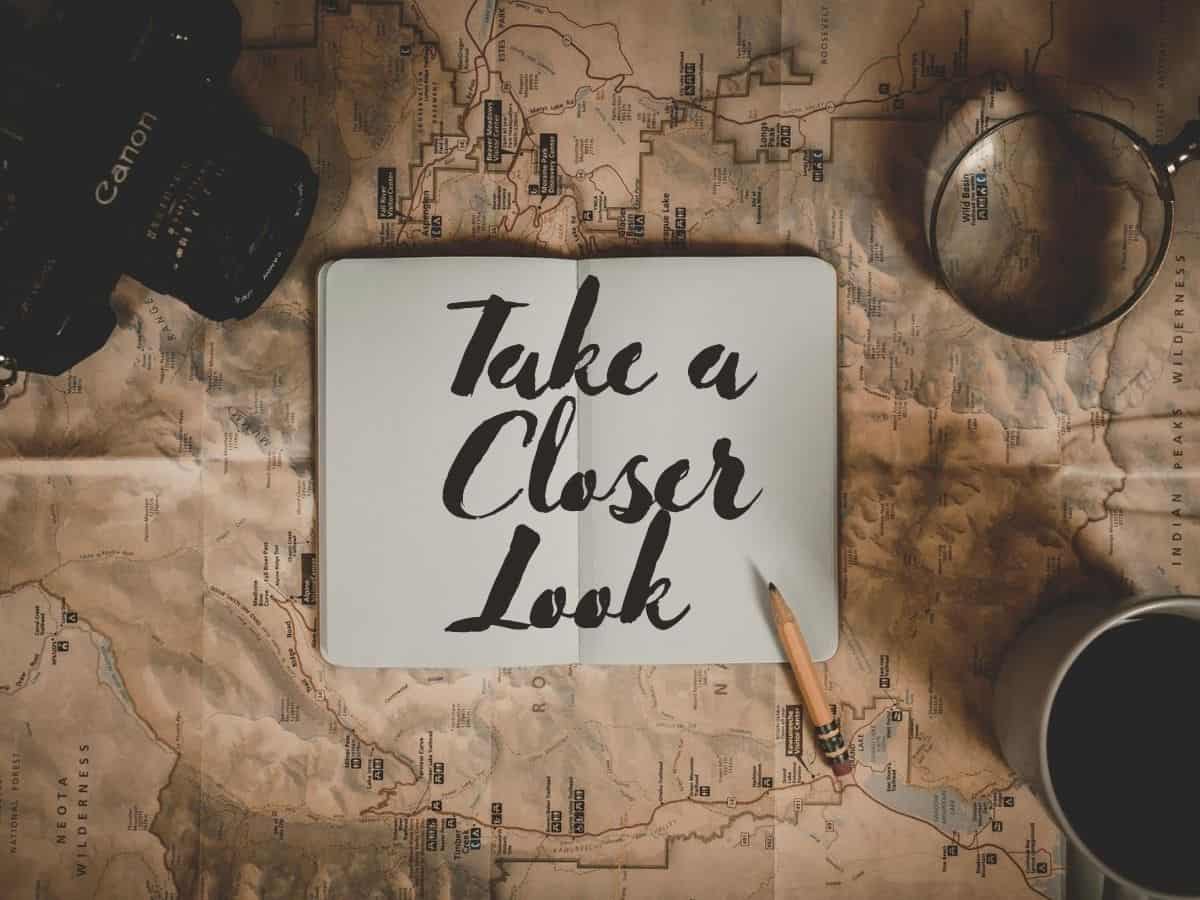 Overview
Overview
Today’s class will focus on finding and curating historical content – in this case images. Our focus will be on sourcing material that is in public domain using our historical archive resources.
Most materials are in the public domain if they were produced before 1923. I see this as roughly equivalent to everything that happened in the world up to and including World War I! If you’re looking for newspaper articles in Chronicling America, they are available up to 1963.
Primary sources produced by the federal government are normally in the public domain both before and after the magic copyright date of 1923. That explains why we as teachers can use the fabulous oral history interviews of former slaves collected between 1936 and 1938 by workers from the Federal Writers’ Project.
Class Session
a. Class will open with a discussion of last week’s class. Our focus will be on teaching strategies that work and our impressions of using Parlay.
b. Next, Peter will share some information on public domain and Creative Commons. Students will use the Creative Commonssearch tools to find a suitable image for a “featured image” for last week’s post.
c. He will also share strategies for searching using a selection of historical archives. Students will then practice:
- find a historical image
- download it
- get citation information and source URL
- adding image to practice post
- include citation with active hyperlink back to source in image caption
See student assignment and resources here https://edmethods.com/classes-21/class-2-take-a-closer-look-2/
In a recent Library of Congress blog entitled Celebrating Black Performers in the New and Expanded National Jukebox!, Cary O’Dell (author) and David Sager (reference specialist) highlighted recordings by African American performers and composers. One record that is featured is by the Cotton Club Orchestra. How can we take some of these ideas and translate them into lessons for the classroom?
Before Duke Ellington was connected to the Cotton Club (located in Harlem, NY), Andy Preer’s Cotton Club Orchestra performed there from 1924-1927. The Cotton Club Orchestra later became the Missourians, which ultimately became the Cab Calloway Orchestra. In 1925, they recorded two hits - one on each side of the same record (O’Dell, 2021 July 12):
When thinking about the learning styles of our students, we might consider activities that include visual, auditory, and kinesthetic/tactile modalities. We can combine these learning modalities with elements of the Library of Congress Primary Source Analysis Tools.
|
Auditory & Visual-Spatial Auditory: Down and Out Blues or Snag ‘Em Blues Visual-Spatial : YouTube Video: Down and Out Blues - Cotton Club Orchestra https://www.youtube.com/watch?v=89vRu-jgMkM |
|
Observe |
|
Reflect |
|
Check out this brief article on Acoustical Recording that is part of the National Jukebox Collection. It explains how musicians recorded prior to using microphones or electrical amplification, between the 1890’s and 1925 (Library of Congress). Acoustical recording is the method used for recording Down and Out Blues and Snag ‘Em Blues.
-
Students can read the article, and then explore changes in recording technology.
-
Students can create a technology timeline: include facts, dates, pictures, and sound bytes).

|
Auditory & Kinesthetic/Tactile |
|
Observe/ Listen |
|
Reflect on Form |
|
|
Move |
|
|
Visual |
|
Observe |
|
Reflect |
|
Question |
|
Campbell, E. S. & Dell Publishing Company, P. (1932) A night-club map of Harlem. [New York, N.Y.: Dell Publishing Company, Inc., ©] [Map] Retrieved from the Library of Congress. https://www.loc.gov/item/2016585261/
Full Playlist:
Black Broadway and Tin Pan Alley
Resources:
Bigband Lou. (2009, January 30). Down and Out Blues-The Original Cotton Club Orchestra- 1925. YouTube. https://www.youtube.com/watch?v=89vRu-jgMkM
Bradford, P., Preer, A. & Cotton Club Orchestra. (1925) Snag 'em Blues. [Audio] Retrieved from the Library of Congress. https://www.loc.gov/item/jukebox-675124/
Campbell, E. S. & Dell Publishing Company, P. (1932) A night-club map of Harlem. [New York, N.Y.: Dell Publishing Company, Inc., ©] [Map] Retrieved from the Library of Congress. https://www.loc.gov/item/2016585261/
O’Dell, C. (2021, July 12). Celebrating Black Performers in the New and Expanded National
Jukebox!. Library of Congress. https://blogs.loc.gov/now-see-hear/2021/07/celebrating-black-performers-in-the-new-and-expanded-national-jukebox/
Sizemore, A., Cotton Club Orchestra & Preer, A. (1925) Down and Out Blues. [Audio] Retrieved from the Library of Congress. https://www.loc.gov/item/jukebox-675122/
6 - 8 9 - 12 13+ Art/Music Technology Social Studies/History UArts
Testimonials
- I love that there is new info on the site daily!
- I had a wonderful time working with the Library of Congress and learning about all of the resources at my fingertips!
- The TPS Teachers Network has an equal exchange of ideas. You know it's not a place where you're being judged.
- My colleagues post incredibly fine resources and ideas....the caliber of the suggestions and resources make me feel that I take a lot from it. It's a takeaway. And I hope that I can give back as much as I get.
- Going into this school year, I have a fantastic new resource for my own instruction and to share with my colleagues!
- I am very glad that I discovered the TPS Teachers Network through RQI. Great resources can be hard to find out there on the internet!

